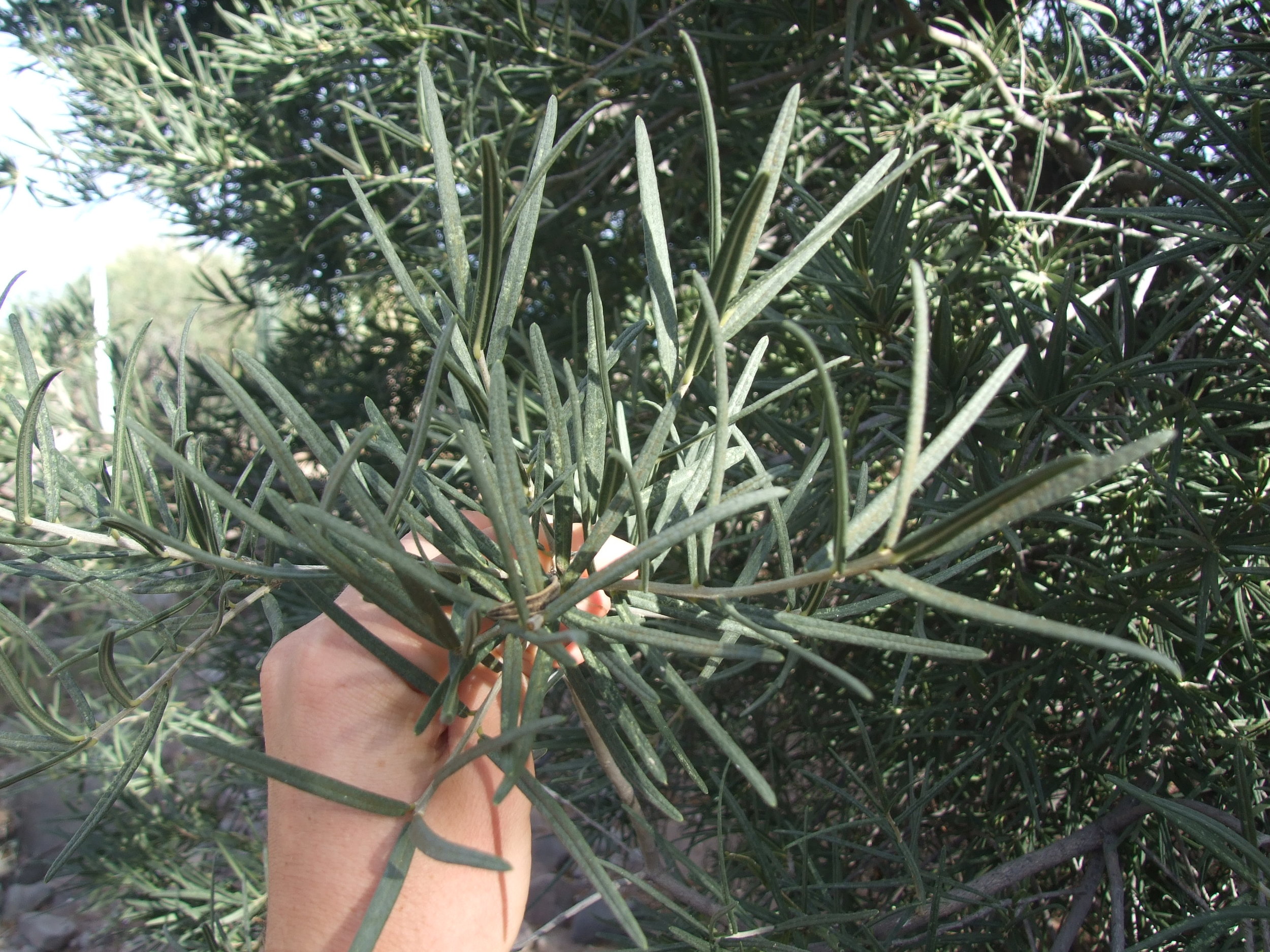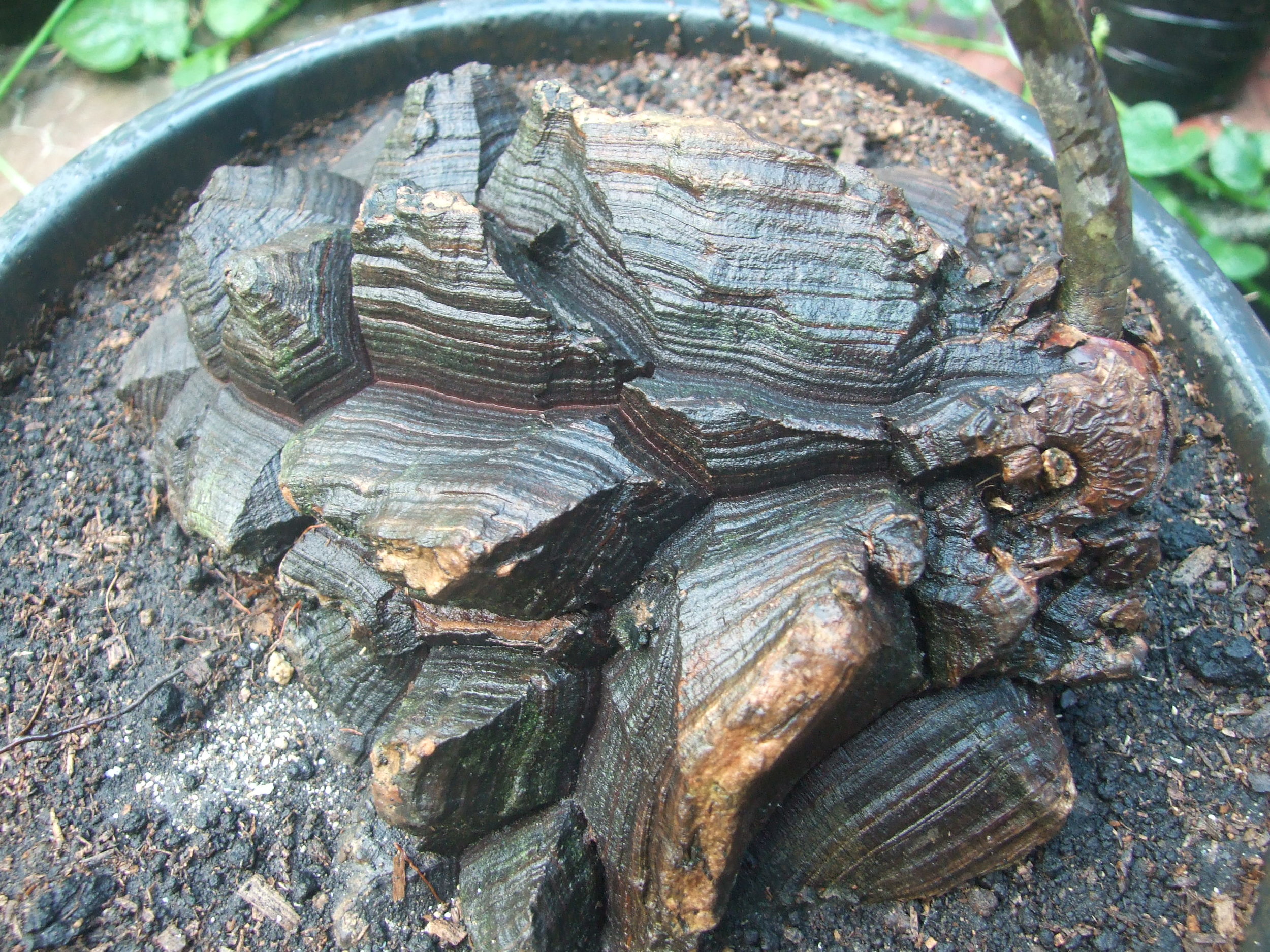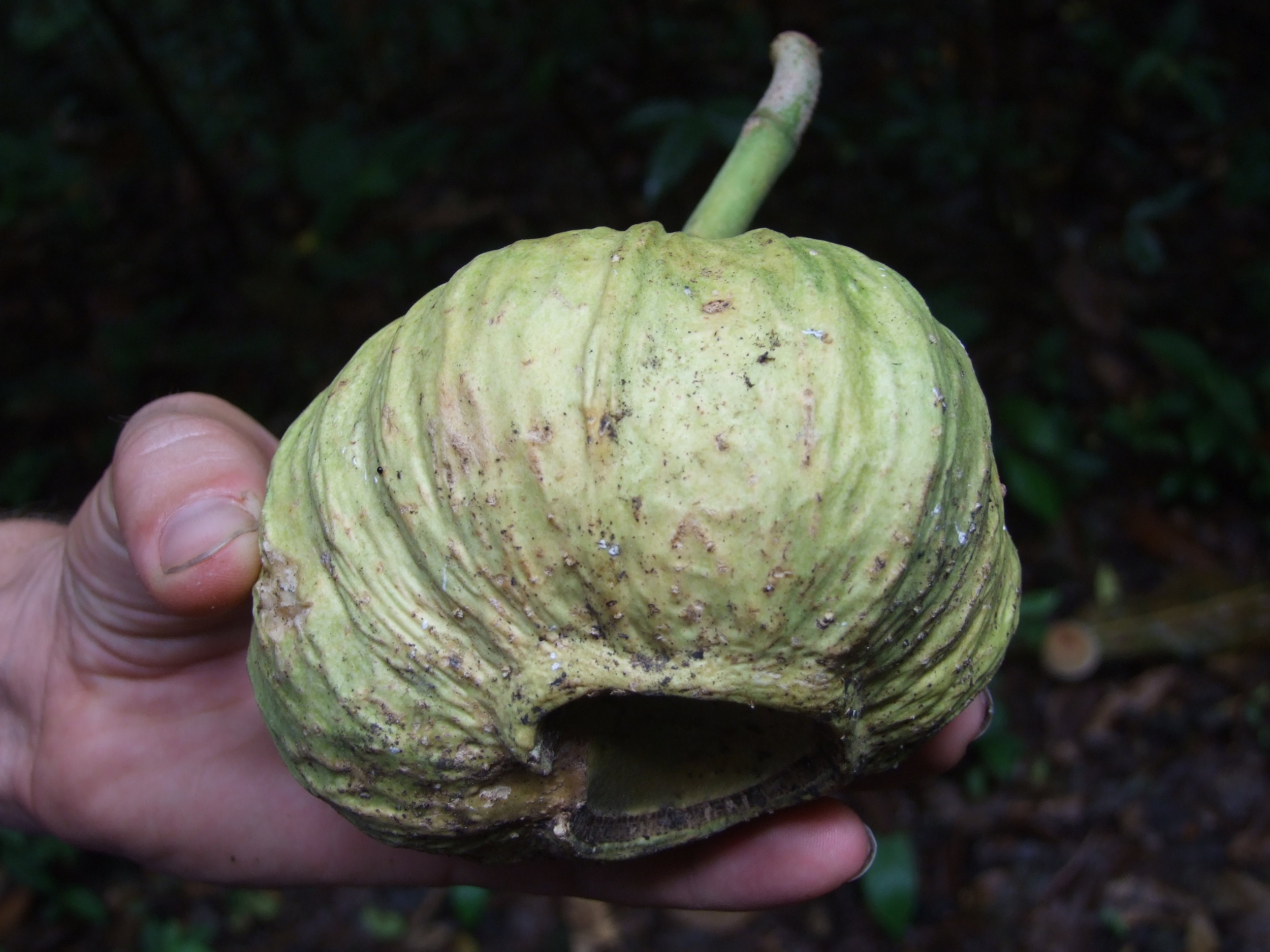Palo Verde grow as a large bush or small to medium size tree. It has smooth, greenish photosynthetic bark. There are numerous species of Cercidium (sonorae, praecox, peninsulare), which can are referred to variously as Palo Verde, Palo Estribo, and Dipua. There is some confusion amongst the layperson as to what, exactly, this differentiation is. Thus, to such individuals, all Cercidium species are thought to be "Palo Verde". This, of course, is not the case. The below photos are of Cercidium microphyllum, which can be distinguished from other Cercidium species by the lack of nodal thorns. Instead of nodal thorn thorns the tree has closely crowded spiny branchlet tips in broom-like arrangements.
Natives of the area used to (and probably still do to an extent) shell, toast and grind the seeds to store for winter sustenance. Reportedly, unless the seeds are fully ripe when harvested, dried and processed, they can cause severe diarrhea. The upper branches have been known to be used as a forage for mules, horses and burros (donkeys).



























